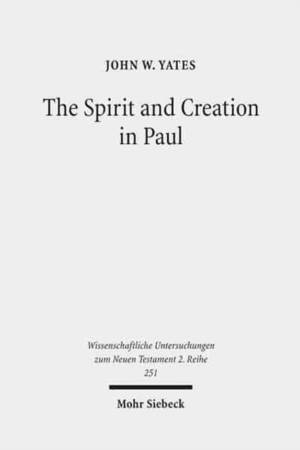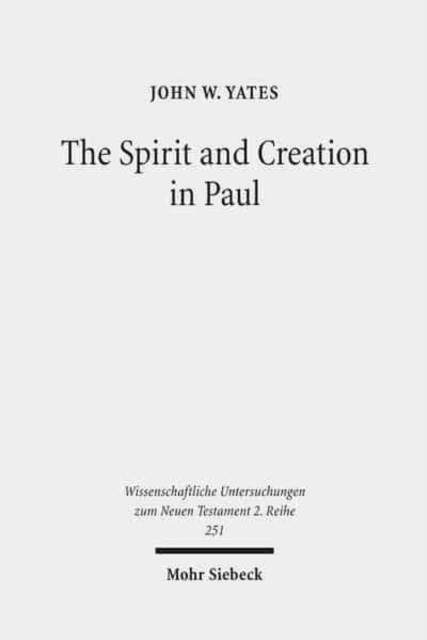
- Afhalen na 1 uur in een winkel met voorraad
- Gratis thuislevering in België vanaf € 30
- Ruim aanbod met 7 miljoen producten
- Afhalen na 1 uur in een winkel met voorraad
- Gratis thuislevering in België vanaf € 30
- Ruim aanbod met 7 miljoen producten
Zoeken
The Spirit and Creation in Paul
John W Yates
Paperback | Engels | Wissenschaftliche Untersuchungen zum Neuen Testament 2. Reihe | WUNT II | nr. 251
€ 77,95
+ 155 punten
Omschrijving
John W. Yates explores the meaning and significance of the Apostle Paul's description of the divine Spirit as life-giving. He argues that with this designation Paul develops a tradition present in the literature of Ancient Judaism and identifies the Spirit as the divine agent who brings about a new creation through resurrection of the dead. In the first half of his work, the author assesses the origin and development of the breath of life tradition in Ancient Judaism, with particular focus on the use of Genesis 2:7 and Ezekiel 36-37. In the second half, he demonstrates how Paul develops this strand of tradition and elevates it to a place of prominence in his description of the divine Spirit. This begins with an analysis of Paul's citation of Genesis 2:7 at 1 Corinthians 15:45, is followed by an examination of the letter/Spirit contrast in 2 Corinthians 3 and concludes with a careful reading of Paul's most thorough description of the life-giving Spirit in Romans 8. Yates offers final reflections on the significance of this study for understanding divine identity in Paul's letters and on the possible implications of this study for Pauline scholarship more widely.
Specificaties
Betrokkenen
- Auteur(s):
- Uitgeverij:
Inhoud
- Aantal bladzijden:
- 218
- Taal:
- Engels
- Reeks:
- Reeksnummer:
- nr. 251
Eigenschappen
- Productcode (EAN):
- 9783161498176
- Verschijningsdatum:
- 31/12/2008
- Uitvoering:
- Paperback
- Formaat:
- Trade paperback (VS)
- Afmetingen:
- 154 mm x 230 mm
- Gewicht:
- 335 g

Alleen bij Standaard Boekhandel
+ 155 punten op je klantenkaart van Standaard Boekhandel
Beoordelingen
We publiceren alleen reviews die voldoen aan de voorwaarden voor reviews. Bekijk onze voorwaarden voor reviews.











